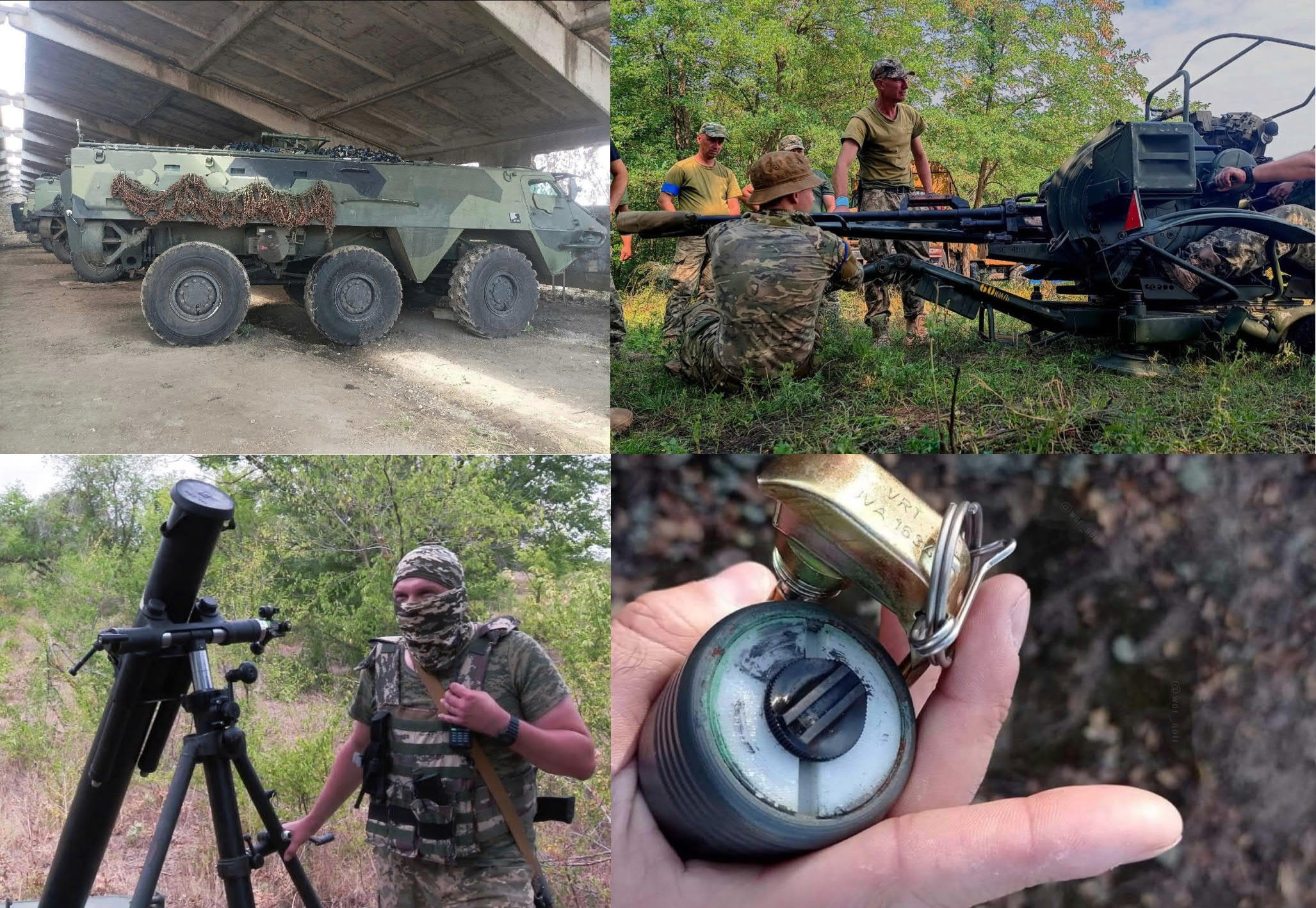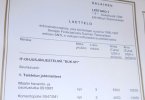Ryssin "tankintuhoajajoukkoja" valmiina...
"How the Russian military will destroy NATO tanks in Ukraine, by Daria Volkova for VZGLYAD. 04.09.2023.
Experts spoke about the work of special groups to destroy Western tanks in Ukraine.
"Our best anti-tank units will be sent to where the use of the most modern enemy tanks is expected." With these words, military experts comment on the statements of the Ministry of Defense on the creation of special groups to combat the armored vehicles of NATO countries supplied to Ukraine. How and with what weapons will these groups operate?
The Russian Ministry of Defense announced the creation of groups to combat Western tanks. It is noted that the corresponding task was set at the direction of the Deputy Minister of Defense of Russia, Colonel-General Yunus-Bek Yevkurov.
The head of the Combat Training Center of the Russian Armed Forces, Yevgeny Arifulin, on the air of the Military Acceptance program on the Zvezda TV channel, said that the Main Directorate of Combat Training had developed methodological recommendations and organized a methodology for their implementation, and the Combat Training Center carried out and put these events into practice. As Arifulin noted, the creation of such groups is a big state system work.
In early April, NATO Secretary General Jens Stoltenberg announced that the first Leopard and Challenger 2 tanks were already in Ukraine. The TASS agency has calculated that according to the data at the beginning of April, Ukraine received only 19% of all the tanks promised by the West. Kyiv received 57 tanks out of 293 announced, with 43 Leopard vehicles transferred by Germany, Denmark, the Netherlands, Poland, Norway and Portugal, and 14 Challenger 2 sent by the UK.
Analyzing the advantages and disadvantages of NATO tanks, Lenta.ru noted that the American M1A2 Abrams, the British Challenger 2 and the German Leopard 2 are serious combat vehicles. They are equipped with modern surveillance and fire control systems, have impressive armor, high mobility and survivability.
At the same time, Western tanks have already managed to acquire not the best reputation. So, Leopard's anti-advertising was their use by Turkey in Syria. The first reports of losses among these tanks began to arrive just a few days after the start of their official use.
In turn, the United States lost more than 80 of its Abrams tanks during the two years of the Iraqi war. In addition, American tanks are more expensive than German counterparts, difficult to repair and maintain, and also consume a lot of fuel. As for the British Challenger tanks, they are significantly slower than their German and American counterparts. It is also the heaviest NATO tank, depending on the modification, its weight can reach 75 tons, which not every bridge can withstand.
The military observer of Komsomolskaya Pravda Viktor Baranets among the shortcomings of the German Leopard tanks calls their large size, which makes them easier to detect and defeat. In addition, "another disadvantage is the general booking." “The hull is the most vulnerable, and the strongest place is the left side of the forehead of the tower,” he argues. Among the shortcomings of the Abrams, Baranets notes the sides with weak armor, which are vulnerable even to old grenade launchers. “And the back of the tank is even for BMP cannons,” he points out. Speaking about the characteristics of the British Challenger, Baranets points to the low reliability of the machine, the inconvenience of the crew and the archaic fire control system.
“There are a lot of varieties and modifications of tanks that NATO countries transfer to Ukraine. They have both traditional vulnerabilities - for example, the top of the tower, engine compartment or tracks, as well as the nuances of specific models.
All this is now in the field of view of our specialists, so that the Russian army can give a confident rebuff. It was on this, in my opinion, that the decision to create groups to fight Western tanks was based, ”military analyst Mikhail Onufrienko tells the VZGLYAD newspaper.
In response to the decision of NATO member countries to transfer their tanks to Ukraine, the Russian military-industrial complex is preparing to produce 1,500 armored vehicles this year and thereby present a powerful armored fist to the West. Increasing the production of domestic tanks is an important, but not the only task of the RF Armed Forces in terms of countering the tanks of NATO countries in Ukraine. It is equally important to strengthen the work of anti-tank units based on information about the vulnerabilities and advantages of Western vehicles.
“I suppose that the groups created in the Ministry of Defense to fight Western tanks will include the most equipped units with the most modern types of anti-tank weapons. Our best anti-tank units will be sent to where the use of the most modern enemy tanks is expected. In addition, they will be additionally trained to fight modern tanks from NATO countries, taking into account their designs and tactics of use,” Vasily Kashin, director of the Center for Comprehensive European and International Studies at the National Research University Higher School of Economics, told VZGLYAD newspaper.
“Currently, the Armed Forces of Ukraine receive several types of Western tanks at once. Some of them may be relatively outdated, such as the Leopard 2A4, while others are quite modern and surpass everything that the enemy had before. In addition, often they can even be better than what is used at the front by our troops,” he said.
“If we talk about the advantages of Western armored vehicles, then the most modern of them in relation to Soviet models have superiority in frontal armor, and are also equipped with more modern means of guidance and fire control. I think these and other factors were taken into account during the development of new tactics for the work of our anti-tank groups,” said Kashin.
As for the means that will be used to counter Western tanks, I think they will not invent anything new here. Today, the most effective of these are man-portable anti-tank systems and drones, which allow strikes from above, where the protection of the tank is weaker. In addition, it is important to link strike assets in working with reconnaissance in order to obtain coordinates about the location of objects,” he said.
In turn, the expert of the Center for Analysis, Strategies and Technologies Sergey Denisentsev, speaking about the possible means that will be used against NATO tanks, noted that "they are generally universal, regardless of the type of armored vehicle." So, in his opinion, the most effective anti-tank weapons are mines, as well as artillery, which hits armored vehicles while they are in the concentration area and in parking lots.
“In addition, anti-tank guided missiles, primarily aviation, loitering ammunition, infantry anti-tank weapons and the tanks themselves, show high efficiency,” he noted.
“In order to stop an offensive with the massive use of armored vehicles, all of the listed means must be used in a complex, within the framework of an organized defense system using anti-tank obstacles,” the source added.
As has been repeatedly stated , the Armed Forces of Ukraine are preparing a large-scale offensive against the positions of Russian troops in the Zaporozhye and Kherson regions. The decisive role in this offensive should be played by tanks, which for about a hundred years have been the main striking force of the ground forces of any country. The Ukrainian leadership has repeatedly stated the need to create large armored groups of hundreds of vehicles. It can be assumed that it is precisely to combat this threat that new special forces of the Russian army are being created in the first place."


 .
.






 Minä oon tuhonnu meijän lii… eiku
Minä oon tuhonnu meijän lii… eiku